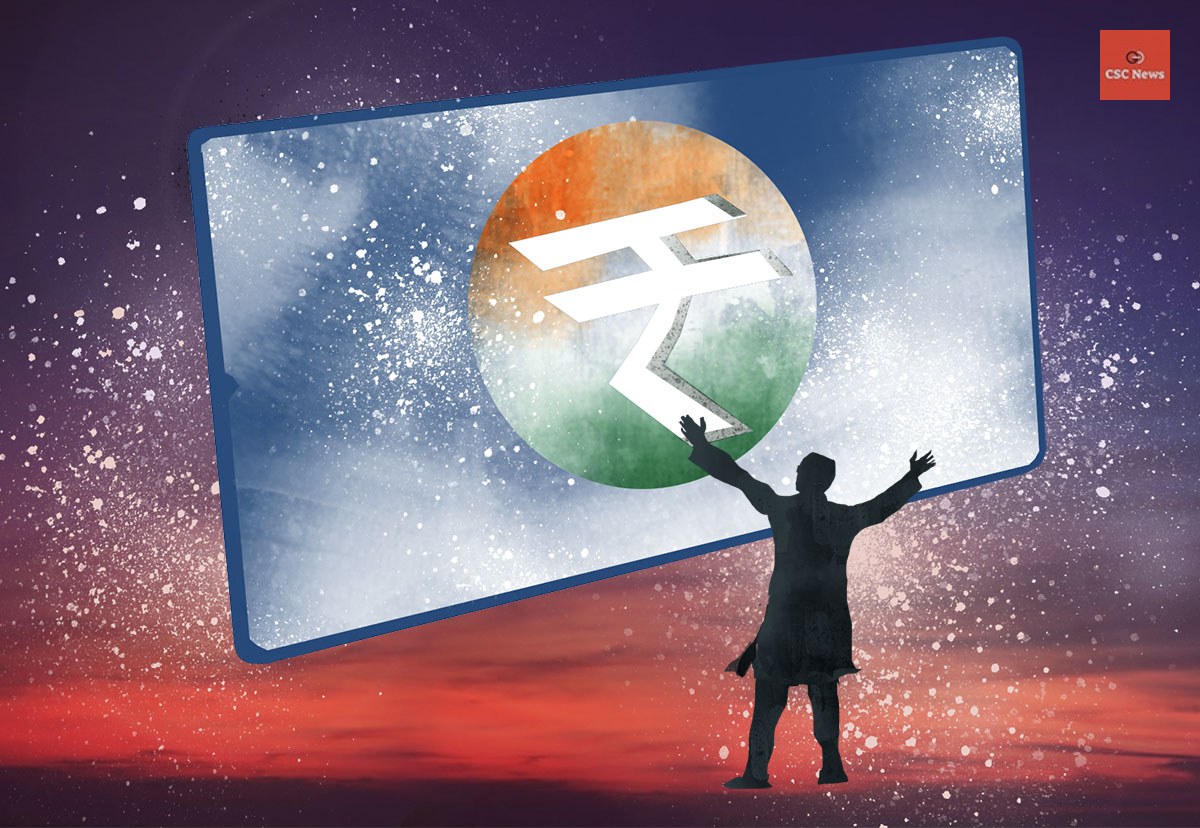A pilot program of the Reserve Bank of India‘s (RBI) digital rupee started on December 1, 2022. Widely announced on November 29, this e-rupee concept is an electronic form of sovereign currency of RBI’s central bank digital currency (CBDC).
Let’s look into it briefly to understand this pilot project and all about India’s first retail digital currency program.
What is e-retail ₹?
As per RBI, the e-retail rupee (₹) is a legal tender that gives access to safe digital transactions of money among merchants from December 1 onwards. So for retail transactions, it is a digital currency of CBDC.

It will be tested first in closed groups, like how telecom companies launch their products in closed user groups (CUGs). Hers CUG will be merchants and some specific consumers.
Pilot plan of RBI
Digital currency worth ₹ 1.71 crores has been issued by the central bank for the pilot plan.

RBI has involved Banking giants- ICICI Bank, State Bank of India, YES Bank, and IDFC First Bank in rolling out the pilot project on December 1. Four other Banks- Bank of Baroda, HDFC Bank, Kotak Mahindra Bank, and Union Bank will subsequently participate in this program. These banks will cover 13 cities in the first phase.
The pilot will cover Mumbai, New Delhi, Bengaluru, and Bhubaneshwar in the first phase. Other cities- Ahmedabad, Gangtok, Guwahati, Hyderabad, Indore, Kochi, Lucknow, Patna, and Simla, will be covered under the pilot in its second leg. All CUGs consumers- merchants and customers in these cities will be able to use this digital currency.
What is the purpose of e-₹?
- To reduce the burden of RBI- printing physical notes, distribution, transportation, storage, and maintenance. The same policy has been running in Sweden for years and is very successful.
- To reduce the dwindling usage of physical notes.
- To make the issuance of currency more efficient and acceptable.
- Any individual, regardless of a bank account, can use the digital currency from their phone just like pre-paid recharge. No bank account for the transaction will be required.
- It is a safer, easier, and more affordable mode of payment than the existing modes of payment.
How to use e-₹?
In the first phase of the pilot project, only CUGs members would be eligible to use this service. Consumers will get a download link through mail or text from RBI, from that link they can download the e-₹ wallet. This wallet will replace the need for a physical wallet.
person-to-person (P2P) or person-to-merchant (P2M) transactions can be made using the e-₹ wallet. Consumers can make transactions by scanning the QR codes at merchant locations like UPI.
Digital rupee versus UPI
It will be the natural fear that arises in your mind when you get to know about this pilot project.

How is UPI different, and will it sustain after the full-fledged implementation of digital rupee project?
UPI is a payment basis that involves two banks. In other words, at the front end, money transfers are instantaneous, however, at the back end, it takes approximately one day for the interbank settlements to be completed. There is a risk settlement in UPI because it has an intermediary in the process. However, in e-Re, there is no risk of settlement because it’s issued by RBI and can be more rapid.
Secondly, UPI is a transaction between two banks and the transaction leaves trails behind but in the case of the digital rupee, RBI will be managing all directly. The consumer will own the currency they possess in their digital wallet. Those who do not want to leave the trails of their transactions behind will prefer e-₹.
Third, there is a strong chance that RBI will not charge anything in the e-₹ transaction because of its low maintenance and efficiency. UPI may charge a transaction fee soon. This might cause the consumer to shift from UPI to the digital rupee.
The e-wallet of the digital rupee does not award interest to the user but UPI is an interest-earning mode of payment.
What are the challenges that RBI’s digital rupee may face
Whether it is a retail customer or merchant, UPI has established itself as an easy and affordable means of transaction. Therefore, RBI’s new project (digital rupee) has to prove its mettle in user-friendliness, privacy, and advanced technology to attract consumers. Users, especially in India, fear digital theft, and trojan attacks on digital data.
Summary
The digital rupee is a regulated version of crypto-currency that can replace and transform the existing modes of payments for the better. While the project has just started and is still in its initial days, it will be interesting to see where it goes in the coming days. The digital currency has enjoyed super success in western countries like Denmark, Sweden, and Poland.
What are your views? Please do comment in the comment box.
